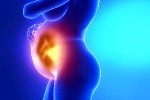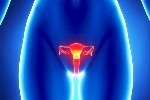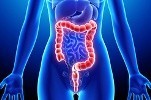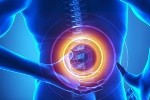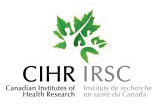Endometriosis
Endometriosis is a condition which has puzzled doctors for a long time. It is associated with painful periods, pain during intercourse, spotting before periods and infertility. But not always so: there are many cases of severe endometriosis discovered by accident during investigation or surgery for something else, or during a hysterectomy, which have never contributed to any difficulty with periods or with conceiving. And, on the other hand, bad period pain and great difficulty falling pregnant are sometimes seen to be associated with almost insignificant amounts of endometriosis seen on laparoscopy. Premenstrual spotting occurs in the majority of endometriosis cases.
The disease is defined by the presence of endometrial tissue somewhere in the pelvic cavity but outside the uterus. Rarely, endometrial tissue can be found in other locations in the body. To date, laparoscopy is the only reliable way to diagnose endometriosis.
Endometriosis tissue not only varies in its appearance but also in how deeply it attaches to the membrane covering the pelvic cavity and the organs. This too influences its effect on the body:
● superficial endometriosis sits on the surface of the membrane and seems to be more implicated in infertility
● deeper endometriosis penetrates a few millimetres into the membrane and the underlying tissues and causes pain.
The Mechanism of Endometriosis Reduces Fertility.
Diagnosis and Approach toTreatment in TCM
● If there is a significant amount of endometriosis in a very inconvenient
place, such as the fallopian tubes or ovaries, it is not difficult to see how
the distortions it causes could prevent conceptions. But this is the reason
for difficulty in conceiving in only 5% of cases.
● Endometriosis tissue may affect fertility by attracting or activating
more macrophages to the area. Macrophages are large cells which
mop up cellular debris and bacteria and other foreign material.
The peritoneal cavity of a woman has quite a large number of macrophages
and one of their jobs is to finish off sperm that swim all the way out of the
tubes and into the abdomen. When there is endometriosis present, the
macrophages seem to become more activated and go on seek and destroy
missions with great vigour.
Unfortunately these vigilantes can enter the fallopian tubes and pick off
sperm before they have had a chance to meet the egg. In women with
partners with poor sperm counts this can be quite disastrous, leaving no
sperm at all to fertilise the egg.
These same macrophages have also been shown to produce
cytokines, which are chemicals which are toxic to sperm and to
embryos, providing another damaging blow to fertility.
● The type of endometriosis that sits superficially on the membrane
surrounding the pelvic structures has been shown to have glands
similar to that found in the endometrium. These glands secrete
mucus. This mucus can coat the fimbriae or the ovary, preventing
the transfer of the egg to the tube. Such a phenomenon has been
observed in animal studies.
● Endometriosis is associated with increased levels of prostaglandins (PGE
and PGF), which appear to have a deleterious effect on the patency and
flexibility of the fallopian tubes.
● endometriosis is associated with a higher incidence of the ovulatory
disturbance luteinised unruptured follicle syndrome (LUFS) and lower
progesterone levels in the luteal phase.
The primary aim of the TCM doctor in the treatment of endometriosis
has always been to remove Blood stagnation. Symptoms such as severe stabbing period pain, clotty menstrual flow and palpable nodules or masses in the abdomen appear to verify the diagnosis of stagnant Blood.
A patient presenting to a TCM clinic with endometriosis will be diagnosed according to her main symptoms and her constitution. When treatment is prescribed as part of an infertility treatment, the doctor will be particularly mindful of reinforcing Kidney Yang and resolving Blood stagnation. Liver Qi stagnation and Spleen Qi deficiency may also contribute and some cases of endometriosis will exhibit elements of Heat or Cold or Damp.
We do know that menstrual blood travels not only downwards from the uterus and out through the cervix but also upwards through the fallopian tubes and out into the peritoneal cavity. This small quantity of blood carries with it bits of discarded endometrium. Women with strong uterine cramps (due to Liver Qi stagnation) are more likely to lose more menstrual flow upwards through the tubes.
The blood and the tissue will either be reabsorbed, or will remain and establish itself somewhere in the pelvic cavity. If Kidney Yang is strong, then movement of Qi in the pelvis will mobilise the menstrual debris, which shouldn’t be there, and it will be efficiently reabsorbed. A weaknessof Kidney Yang, on the other hand, will allow the accumulation of blood and tissue such that it stagnates.
References
Contact Us
Chalmers Medical Building
328 Hwy 7 East Suite 201,
Richmond Hill ON L4B 3P7
Tel: 416 399-3888
E-mail: info@aahclinic.com
Conditions Treated
Effective Herbal Therapy for Inflammatory Bowel Disease
NO Surgery!
Carolyn XU Treats Ulcer Colitis Successfully
Considering Therapy?
Resource Links
References
Donation
Great things happen when you put your heart into it.
Click Here to Send us your request
Tips
Questions about your first appointment or if your insurance will cover the cost? Find more information below.


